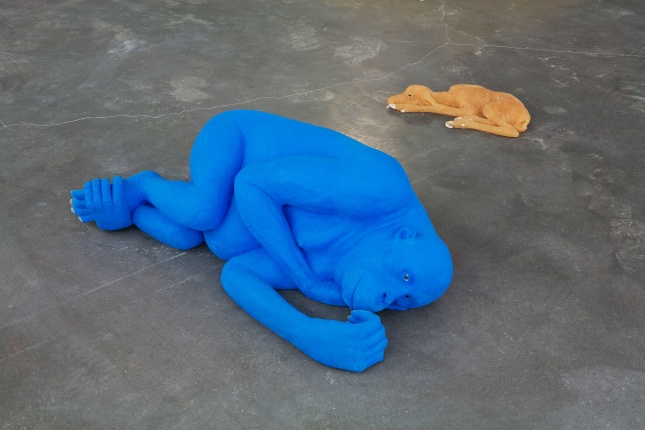“Carsten Höller: Experience” is the most comprehensive US exhibition to date of the artist’s engaging work.
Animal Group, 2011. Dolphin, Hippopotamus, Crocodile, Orangutan, Rhinoceros, Reindeer, Walrus. Installation view: “Experience,” New Museum. Photo: Benoit Pailley
Lobby, Lobby Gallery, Second Floor, Third Floor, and Fourth Floor Visit Us
The current show gathers together a number of the artist’s signature works in an arrangement that transforms the viewer’s experience of time and space. Originally trained as a scientist, Höller is frequently inspired by research and experiments from scientific history and deploys these studies in works that alter the audience’s physical and psychological sensations, inspiring doubt and uncertainty about the world around them. His work often draws on social spaces outside of the museum such as the amusement park, zoo, or playground, but the experiences they provide are always far from our usual expectations of these activities. Höller’s art takes the form of proposals for radical, new ways of living by creating sculptures and diagrams for visionary architecture as well as transportation alternatives, such as his renowned slide installations. These concepts may seem impossible in the present day, but suggest new models for the future.
Each floor of the exhibition explores a different general theme within Höller’s work to provide a carefully choreographed journey through the building and the artist’s oeuvre. The fourth floor focuses on the theme of movement—featuring the artist’s spectacular Mirror Carousel (2005), which provides riders with a notably different physical experience than the traditional fairground merry-go-round, while at the same time reflecting and illuminating the space surrounding it. The third floor gathers together works that seek to provide an altered or utopian experience of architectural space. For example, his Giant Psycho Tank (2000) invites viewers to float weightlessly in the water of a sensory deprivation pool, providing a tenebrous, out-of-body experience.
 “Carsten Höller: Experience,” 2011–12. Exhibition view: New Museum. Photo: Benoit Pailley
“Carsten Höller: Experience,” 2011–12. Exhibition view: New Museum. Photo: Benoit Pailley
Over the years, the artist has employed psychotropic drugs, flashing lights, and other stimuli to potentially alter the viewer’s mental state. His new site-specific installation on the second floor, Double Light Corner, flickers back and forth on a central axis, creating an immersive, hallucinatory experience. The work is paired with a recreation of Höller’s Experience Corridor in which the viewer is given the choice to undertake a number of self-experiments. The sculptures, Giant Triple Mushrooms (2010), icons of the kind of personal exploratory journey that his work has always centered on, will also be on view. Taken as a whole, Höller’s work is an invitation to re-imagine the way in which we move through the world and the relationships we build as he asks us to reconsider what we think we know about ourselves.
 Swinging Curve, 2009. Installation view: “Carsten Höller: Experience,” New Museum. Photo: Benoit Pailley
Swinging Curve, 2009. Installation view: “Carsten Höller: Experience,” New Museum. Photo: Benoit Pailley
The exhibition is organized by Massimiliano Gioni, Associate Director and Director of Exhibitions, with Gary Carrion-Murayari, Kraus Family Curator and Jenny Moore, Assistant Curator.
 Untitled (Slide), 2011. Installation view: “Carsten Höller: Experience,” New Museum. Photo: Benoit Pailley
Untitled (Slide), 2011. Installation view: “Carsten Höller: Experience,” New Museum. Photo: Benoit Pailley
Catalogue
“Carsten Höller: Experience” will be accompanied by a fully illustrated 248-page catalogue that takes the form of a scientific dictionary with entries covering key themes and ideas in the artist’s practice. Co-published by Rizzoli and the New Museum, contributors include New Museum curator Massimiliano Gioni, as well as Daniel Birnbaum, Maurizio Cattelan, Germano Celant, Lynne Cooke, Hal Foster, Tim Griffin, Jessica Morgan, Hans-Ulrich Obrist, Philippe Parreno, Dorothea von Hantelmann, and others.







